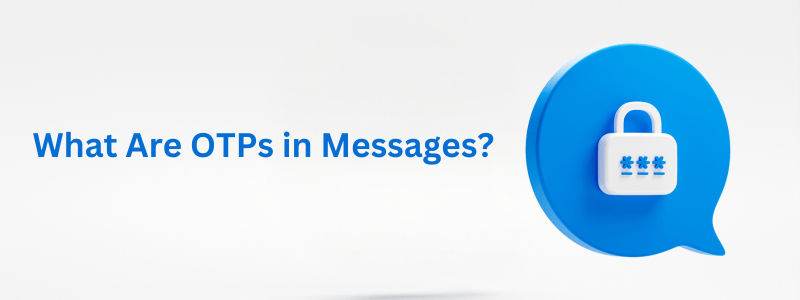
Have you ever received a text with a short, random string of numbers and wondered what it was all about? That’s an OTP or One-Time Password. In our increasingly digital world, OTPs play a crucial role in securing our online activities. Let’s dive into what OTPs are and why they’re so important.
What is an OTP?
Meaning of OTP
An OTP, or One-Time Password, is a unique code generated for a single login session or transaction. Unlike your regular passwords, OTPs are temporary and expire after a short period or after their first use, making them a robust security measure.
Common Uses of OTPs
OTPs are widely used in various sectors, including online banking, e-commerce, and even in corporate environments to safeguard sensitive information. They add an extra layer of security, ensuring that even if your primary password is compromised, unauthorized access is still prevented.
How Do OTPs Work?
Generation of OTPs
OTPs are typically generated by algorithms that ensure each code is unique and unpredictable. This can be done through software applications or hardware devices specifically designed for OTP generation.
Delivery Methods
OTPs can be delivered to users through multiple channels:
- SMS: The most common method, where the OTP is sent to your mobile phone.
- Email: Some services send OTPs to your registered email address.
- Authenticator Apps: Apps like Google Authenticator or Authy generate OTPs on your smartphone.
Types of OTPs
Time-Based OTPs (TOTP)
Time-based OTPs are valid for a specific period, usually 30 to 60 seconds. After this period, the OTP expires and a new one is generated.
Counter-Based OTPs (HOTP)
Counter-based OTPs are valid until they are used. They are generated based on a counter that increments every time a new OTP is requested.
Why Are OTPs Important?
Enhancing Security
OTPs provide an additional layer of security, making it harder for hackers to gain unauthorized access to your accounts. Even if they manage to steal your regular password, they would still need the OTP to log in.
Preventing Unauthorized Access
By requiring a second form of authentication, OTPs significantly reduce the risk of unauthorized access, ensuring that only the legitimate user can complete the login or transaction.
Use Cases for OTPs
Banking and Financial Services
Banks use OTPs to verify transactions, ensuring that only the account holder can authorize payments or changes to the account.
E-commerce and Online Shopping
E-commerce platforms often use OTPs for confirming purchases or changes to account details, adding a layer of protection against fraud.
Corporate Security
Many companies use OTPs to secure access to their internal systems, protecting sensitive corporate data from unauthorized access.
How to Generate OTPs
Software Tools
There are various software tools available for generating OTPs, such as Google Authenticator, and Authy. These tools are easy to use and widely adopted.
Hardware Tokens
Hardware tokens are physical devices that generate OTPs. They are often used in high-security environments where an extra layer of protection is necessary.
Advantages of Using OTPs
Increased Security
OTPs significantly enhance the security of your accounts by providing a second layer of authentication.
User Convenience
Despite adding an extra step to the login process, OTPs are generally user-friendly and easy to use. They provide a simple yet effective way to secure your accounts.
Challenges and Limitations of OTPs
Potential Vulnerabilities
While OTPs are generally secure, they are not completely foolproof. Phishing attacks and other sophisticated hacking techniques can potentially compromise OTPs.
User Experience Issues
Some users may find the extra step of entering an OTP inconvenient or confusing, which can lead to a poor user experience.
Best Practices for Implementing OTPs
Choosing the Right Method
It’s essential to choose the OTP delivery method that best suits your needs and ensures the highest level of security.
Ensuring User Awareness
Educating users about the importance and proper use of OTPs can significantly enhance their effectiveness.
Future of OTPs
Trends and Innovations
The future of OTPs looks promising with advancements in technology. Biometric authentication and other innovative methods are emerging as potential alternatives to traditional OTPs.
Alternatives to OTPs
While OTPs are effective, alternatives such as biometrics, push notifications, and hardware security keys are gaining popularity for their convenience and enhanced security features.
How to Secure Your OTPs

Safe Practices
Always ensure that your OTPs are sent through secure channels and avoid sharing them with anyone.
Recognizing Phishing Attempts
Be vigilant about phishing attempts. Never provide your OTP to anyone who contacts you unsolicited, even if they claim to be from a trusted organization.
Common Misconceptions About OTPs
Myths vs. Reality
There are several misconceptions about OTPs, such as the belief that they are invulnerable. While they are highly secure, no system is entirely foolproof.
Clearing Up Confusion
Educating users about the realities of OTPs can help clear up common misconceptions and promote better security practices.
Case Studies
Real-World Examples of OTP Use
Several high-profile companies have successfully implemented OTPs to enhance their security. For example, Google uses OTPs for two-factor authentication, providing an additional layer of protection for its users.
Success Stories
Many organizations have reported a significant reduction in security breaches after implementing OTPs, highlighting their effectiveness in protecting sensitive information.
Conclusion
In a world where digital security is paramount, OTPs provide a simple yet effective way to protect your online accounts and transactions. By understanding what OTPs are and how to use them, you can significantly enhance your digital security and safeguard your sensitive information.
FAQs
1. What is an OTP?
An OTP, or One-Time Password, is a unique code used for a single login session or transaction, adding an extra layer of security.
2. How secure are OTPs?
OTPs are highly secure as they are unique and expire after a short period or after their first use, making unauthorized access difficult.
3. Can OTPs be hacked?
While OTPs are generally secure, sophisticated hacking techniques such as phishing can potentially compromise them.
4. How do I use an OTP?
To use an OTP, simply enter the code sent to your registered device when prompted during a login session or transaction.
5. What happens if I lose my OTP device?
If you lose your OTP device, contact the service provider immediately to secure your account and obtain a new OTP method.
For more insights on keeping your digital activities secure, check out our article on Cybersecurity: Protecting Your Digital Life.
